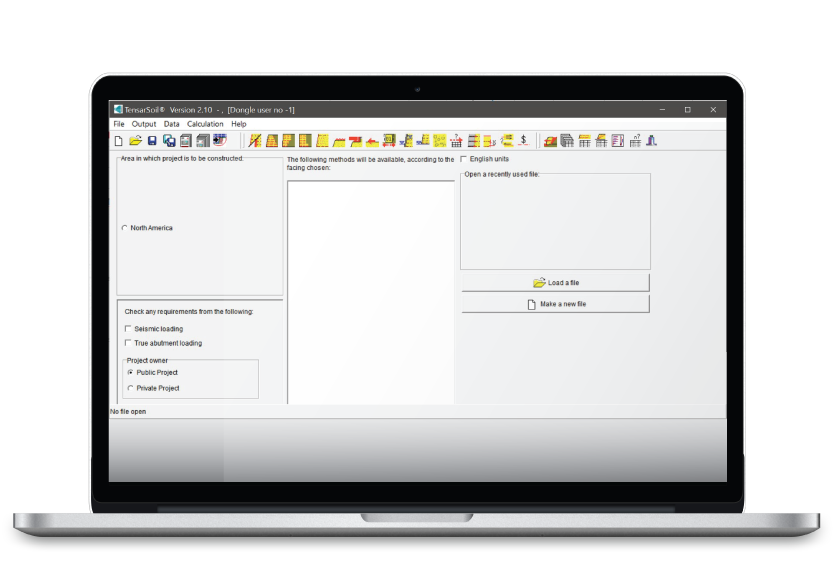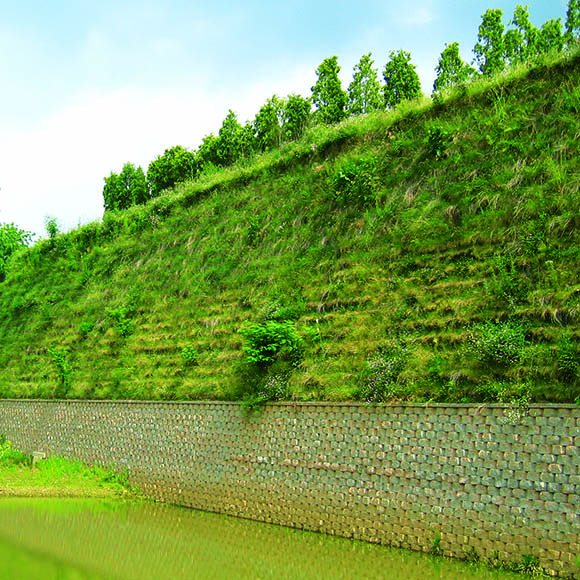Soil Slope Reinforcement
Preserve aesthetic appeal and minimize environmental impact while maximizing usable land
Reinforced soil slopes and steepened slopes present unique stability challenges, but they can be better alternatives to other grade separation solutions when aesthetic appeal and environmental impacts must be considered. Reinforced soil slopes can also provide effective resistance to differential settlement and seismic activity and eliminate surficial stability issues. These slope stabilization methods offer flexibility that makes them applicable in a broad range of project types, from transportation infrastructure to single- and multi-family residential housing.
Tensar’s reinforced soil slope (RSS) solutions are stabilized with geogrids to provide long-term durability and structural integrity that you can rely on. These solutions often cost less than conventional concrete walls thanks to reduced fill requirements and the allowed use of on-site fills. In fact, our RSS installations typically cost 30-60% less than conventional concrete wall methods and have been used in commercial and industrial, municipal road, transportation, energy sector and residential foundation applications worldwide. Our geogrid slope stabilization solutions offer a wide variety of facing options to satisfy aesthetic or environmental needs.
Steep Slopes Greater than 45°
Slopes over 45˚ typically incorporate stair-stepped, welded wire mesh forms that simplify installation. A black steel welded wire form is used to develop a wrap face system that is left in place to aid in compaction and face alignment in steep slope stabilization applications.
To address slopes greater than 70˚, we offer the SierraScape® retaining wall system. This welded wire basket system connects Tensar geogrid to the system basket using a positive, mechanical connection which reduces the potential for surficial stability problems.
Vegetated Reinforced Soil Slopes (Native Vegetation / Bioengineering)
For centuries, soil bioengineering techniques have been used to protect and restore sensitive ecosystems and watersheds with native plantings. This technology sustains ecosystem-friendly and vegetated systems that provide aquatic habitat, erosion control and other benefits.
Soil bioengineering can reach new heights with the construction of vegetated reinforced soil slopes (VRSS) on highly steepened sites. Fully engineered, these ecologically and structurally sound installations provide secure, cost-effective and environmentally responsible solutions on river, stream, waterfront, upland slope and flood control sites. VRSS can also be used to protect and restore areas disturbed by construction or natural disasters.
Diverse Facing Options
Tensar’s RSS solutions are compatible with a variety of different facing options. If your project needs to blend naturally with the surrounding environment, we offer vegetated facings that preserve natural beauty. For projects where cost savings is important and the project doesn’t require immediate aesthetic appeal, hydroseeding with flower or grass seed can be installed quickly. Hydroseeding is a common facing choice for projects such as overpasses and roadways. When instant visual appeal is required, sod and landscape engineering can be used to quickly present a finished look that enhances the appearance and value of the project. These options are most popular in marquee residential or commercial sites.
For other facing needs, Tensar’s RSS solutions can be used with stone facing or architectural veneers. Stone facing components stack quickly and evenly to create a more uniform wall face; their flexibility and connection capabilities help resist differential settlement. The wire-form is filled with native or imported stone that can be color and size-specified for a desired look and feel. Architectural veneers treated with stacked stone or a shotcrete-sculpted face can provide a unique but traditional finish.
Pressure Relief Applications
In addition to grade separation projects, the SierraScape System can be used for pressure relief to support soil and building loads below grade, providing a faster and more affordable solution. Because the system effectively supports surrounding fill, lateral soil loads against the below-grade structure are eliminated. The result: lower cost foundation walls that are structurally equivalent to conventional installations, including cast-in-place. SierraScape pressure relief walls can be specified for building foundations and existing bridges, flood walls and other new construction or rehabilitation projects.







